Gold Coast light rail stage 4: Full details and what residents really think of controversial project
Palm Beach residents have given a surprising answer to whether or not they actually want the light rail going down the Gold Coast Highway. See what they had to say on the street.
Transport
Don't miss out on the headlines from Transport. Followed categories will be added to My News.
The great Palm Beach light rail straw poll results are in - and just over half of those surveyed are against it running through their suburb.
The Bulletin hit the southern streets this week, taking the pulse of 55 residents on the controversial proposed airport tram route, with 31 against it coming to their midst.
A total of 24 favoured proposed plans that would linked Burleigh Heads to Coolangatta via the Gold Coast Airport
Among those surveyed were business owners, visitors and residents in the community which has been long-divided by the route debate.
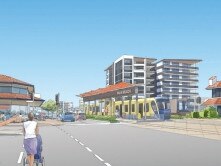
The Bulletin straw poll came after one anti-light rail resident complained they had yet to meet one person “down here” in support of Stage Four plans to run through the centre of Gold Coast Highway.
Resident Greg Thomas was among the supporters: “You’ve got to look at the generational shifts within the community, there’s many different generations here,” he said.
“You’ve got to be conscious of the future generations coming through and what they’re going to be looking for and what they’re going to be up against.
“It’s not about a way of life that other generations have had.
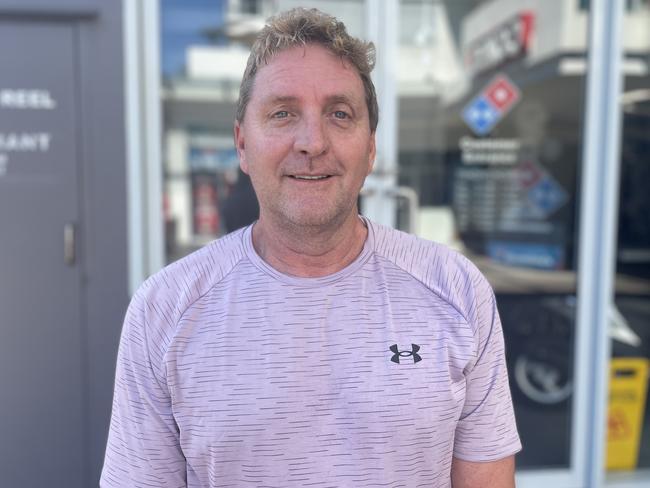
Mr Thomas said the light rail would help boost the local economy and job market: “If there is infrastructure that supports growth, it will hopefully attract business from right around the world,” he said.
“Which means if it’s attracting big business then that’s research and development facilities, and there’s jobs created here without individuals like myself that had to leave Australia many years ago to further my career.
“Progress is progress, you can’t stop it and if you stop it, it puts Australia in a bad position in its world rankings.”
Mr Thomas understood why many opposed the development, saying plans and processes could be established to consider community views in decision-making.
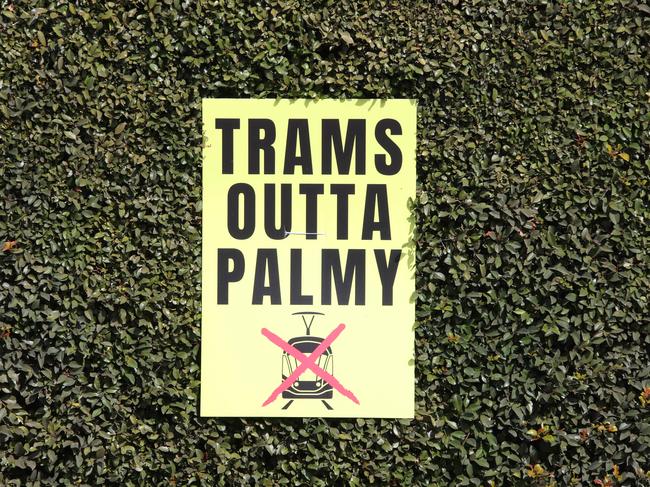
He suggested imposing a possible “development fee” on construction and developers.
“The benefits for the community is that we’ll get better services across the board, more variety across the board,” Mr Thomas said.
“Also, to put our children in a position for the future, if infrastructure is supported and grows then there might be a future for them beyond that of tourism.”
Others who did not wish to be named told the Bulletin they believed it would better support older generations who relied on public transport to get around.
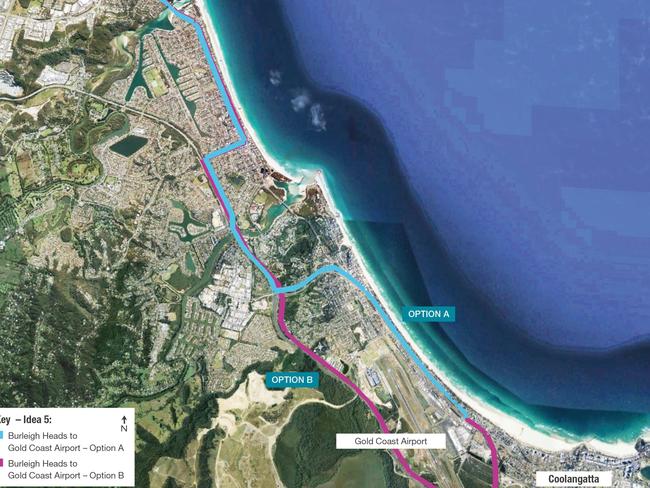
Another man, who is moving from Palm Beach to Southport due to rising costs of rent, said he hoped it would bring more high-rise developments to the area and in turn bring down the cost of housing in the area.
Earlier this week the Bulletin revealed 17 suburbs’ values have skyrocketed along the preferred route to the airport in the past two years, including up to 75 per cent in Palm Beach.
Market research for State Government showed 63 per cent of people surveyed favoured the coastal route to the airport for hte estimated $2.7bn project.
Palm Beach tram critics’ ‘fright tactics’ proven wrong
April 6: THE Property Council of Australia has hit out at “vested interest groups” in Palm Beach criticising government data that showed the light rail was behind surging land values.
Values of 17 suburbs have skyrocketed up to 75 per cent along the preferred future route of the tram’s Stage 4 in the past two years.
Property Council Gold Coast chairman Matthew Schneider said the data proved investment in infrastructure boosted land values.
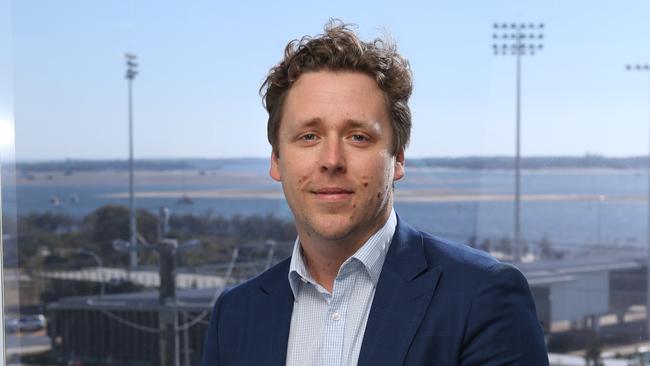
“It’s robust and independent evidence that the investment being made in infrastructure across the city, particularly light rail, drives increases in property values – not decreases as some vested interest groups have attempted to frighten residents into believing for their own purposes.
“It is also great evidence of the relative value of Gold Coast property compared to capital city markets – a force which continues to drive fundamental strength in the Gold Coast property market.”
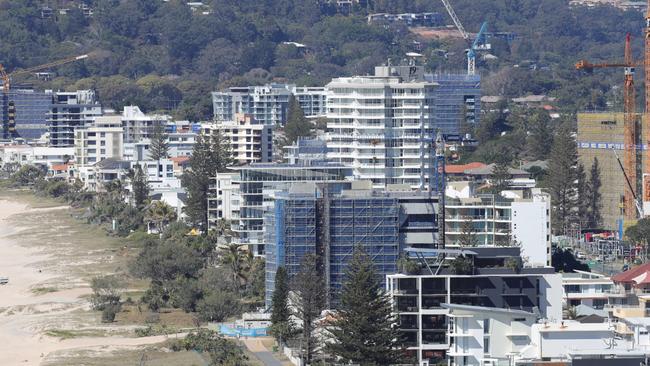
A vocal number of Palm Beach residents are opposing the light rail extension from Burleigh to Coolangatta, citing its impact on parking, traffic and the resumption of properties.
They have previously argued the 13km extension would lower property values in the suburb.
However, state government land valuation data showed Palm Beach (up 75.4 per cent), Burleigh Heads (up 65.5 per cent), Burleigh Waters (up 60 per cent), Merrimac (up 60 per cent) and Currumbin (up 58.8 per cent) recorded the highest spikes in prices in the past two years.
“This was particularly evident in the southern part of the coast due in part to the ongoing progression of stages three and four of the Gold Coast light rail,” the report said.
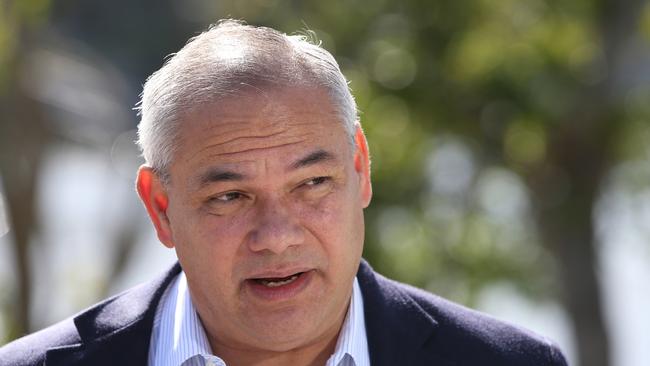
Mayor Tom Tate said the data backed the case to fast-track Stage 4.
“When the Gold Coast light rail City Deal was struck, a key consideration was always the investment return the state and federal governments would achieve from increased property values along the route,” he said.
“The calculation was around 30 per cent so I’m delighted that in suburbs like Palm Beach it has been up to 75 per cent.
“That is an incredible return for all tiers of government and makes a compelling business case to get on with Stage 4 now.
Transport Minister Mark Bailey said the state was keen to work with the council and the federal government to build the $2.7bn, final link.
“Clearly, the majority of people want it along the Gold Coast Highway. Some people don’t, which is fine, everyone is entitled to their point of view,” he said.
“But we’re doing the necessary planning work to get it into a position where it can attract all three levels of funding from the government.
“Obviously, we need an agreement on costs from all three levels of government before we make a final commitment to Stage 4.
What Palm Beach really thinks about light rail extension
A SUPER MAJORITY of Gold Coasters want the light rail’s controversial stage 4 to run through Palm Beach.
Majority support exists for the coastal route ahead of a proposal to run it down the heavy rail corridor, independent market research reveals.
The research was compiled for the state government as part of community consultation efforts on the $2.7bn project.
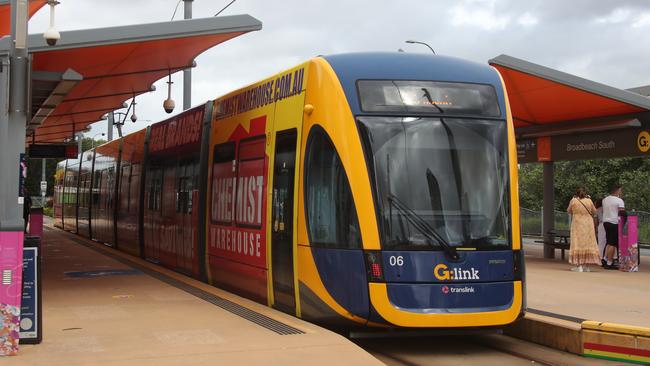
Stage 4 will run from Burleigh to the Queensland border via the Gold Coast Airport, will be 13km long and feature more than nine stations, two new bridges and a wildlife overpass.
More than 1000 people were surveyed for the community consultation between July and September 2021.
It found:
* 63 per cent favoured the coastal route down the Gold Coast Highway to the Airport.
* There were strong concerns about the loss of parking, the proposed reduction in traffic lanes on the highway from six to four, environmental impacts.
* Alternative routes and modes of transport instead of trams were also proposed.
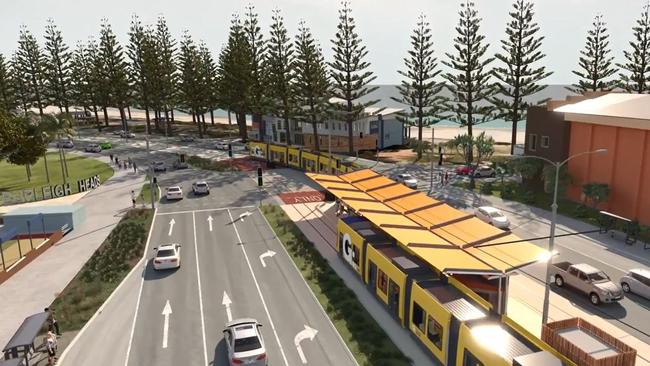
Transport Minister Mark Bailey said the results came from the “gold standard of community consultation”.
“This first stage of consultation for the Burleigh Heads to Tugun section saw an unprecedented level of engagement with 43 face-to-face community sessions over a 10-week period – that equates to more than 220 hours listening to the community’s feedback and concerns and answering questions,” he said.
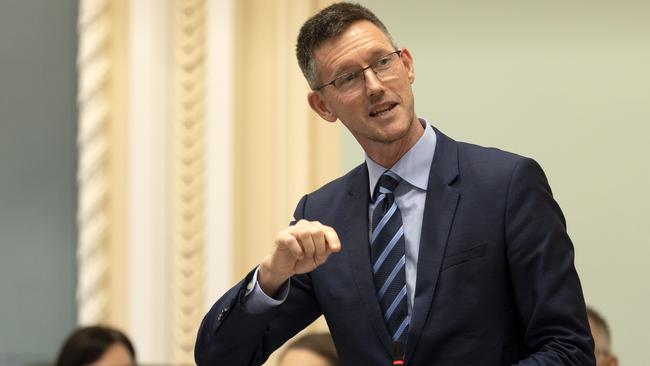
“Light rail teams will then have the big job ahead of them in reviewing and incorporating feedback into future concept designs to make sure we get the best possible outcome.
“A highlight I’m pleased to see is the majority of people are supportive of the connectivity light rail can bring to the area.
“As the population continues to grow on the southern Gold Coast, we know a transport solution like this is necessary in unblocking the busy Gold Coast Highway and getting locals where they need to be sooner.”
The community consultation results come just days after the Bulletin revealed construction would finally begin on Stage 3, from Broadbeach to Burleigh Heads, in April.
The cost of the project increased to $1.2bn, up from $709 in 2018.
No start date has been given for Stage 4 but Mayor Tom Tate is pushing for work to begin in 2025 once trams begin to run to Burleigh.
Features of stage 4 include:
- A fauna land bridge crossing between Burleigh Headland and Burleigh National Park;
– Stations at Burleigh Heads National Park, Twenty Eighth Ave, Nineteenth Ave, Eleventh Ave, Palm Beach Ave, Thrower Drive, Tomewin St, Toolona St and Boyd Street;
– New bridges crossing Tallebudgera and Currumbin creeks for both trams and pedestrians.
The Currumbin Creek pedestrian bridge has previously been revealed;
– The Gold Coast Highway will be reduced to two lanes in parts of Palm Beach;
– Improved connectivity between Palm Beach and the M1 via Nineteenth Ave;
– Improvements to the “Palm Beach Ave precinct” and Tugun Village to improve traffic flow.
Mr Bailey said there was more community consultation to come, with the government this year expected to unveil its plans for the Tugun to Coolangatta section.
It also jointly committed $5 million with the Gold Coast City Council on the business case for the stage 4 project.
$180,000 a metre: How much tram upgrade is really costing
The next stage of the Gold Coast light rail will cost $180,000 a metre, new figures reveal.
Construction of the 6.7km tramline between Broadbeach and Burleigh Heads will begin within weeks after the state government last week signed off on a contract with builder John Holland Group.
The project’s cost now comes in at $1.2bn, around $500m more than it was originally priced at.
This translates to around $180m a km or around $180,000 per m of the 6.7km route.
It comes just days after Acting Gold Coast Mayor Donna Gates revealed the cost of the Burleigh Heads to the border via Gold Coast Airport section was tipped to top $2.7bn.
Long-running delays flagged as light rail extends to Burleigh
Gold Coast motorists can expect lower speed zones and “inconvenience” during the three-year build of the light rail along the Gold Coast Highway stretch from Broadbeach to Burleigh.
State Transport and Main Roads Minister Mark Bailey thanked motorists “for patience in advance” of the disruption, set to begin this month now the $1.2 billion build contract for the 6.7 kilometre track has been signed.
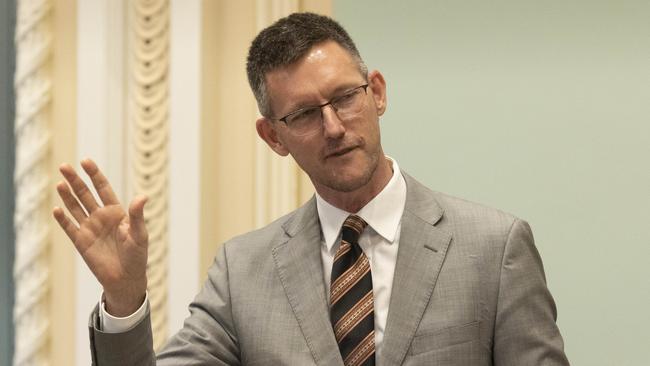
Mr Bailey forecast lower speed zones with ongoing work in a “live environment” as efforts are made to minimise the impact on Gold Coast Highway drivers during the build along its length.
“We expect a three year build. There will be a live working environment. For Stage 2 we had a largely greenfield site, so we could smash it out very quickly,” Mr Bailey said.
“But this one, of course, we will be managing the Gold Coast Hwy. It will be a live environment 24-7 – and there will be some inconvenience, no doubt about that.
“We certainly thank people for patience in advance.
“But if we can get a really strong public transport system all the way down to Burleigh, it’s going to be positive.”
Mr Bailey said disruptions would “vary over time”.

“I think the main thing for people driving between Broady’ and Burleigh will just be to take it easy through there,” he said.
“Work sites will change at different times and we will try to minimise the impacts …
“But on big jobs like this when we have big heavy stuff coming we will try to do that late at night when everyone is asleep and there are not as many people getting around.
“But there will be plenty of work during the day and reduced speed zones at times – you know that will be a short term inconvenience for very long term gain.”
Meanwhile, the Queensland LNP has slammed the state government’s management of the light rail build – and Mr Bailey’s track record as Minister.

Transport and Main Roads Shadow Minister Steve Minnikin said: “The Gold Coast light rail is two years late and half a billion dollars over budget, officially marking Mark Bailey as the most incompetent Transport Minister in Queensland’s history.”
“Despite inking the eye-watering $1.2 billion contract on Wednesday, the Minister is only today allowing Queensland to know the cost of his incompetence to avoid parliamentary scrutiny this week,” he said.
“The Gold Coast light rail from Broadbeach to Burleigh joins a plethora of projects that are delayed and over budget under this state government.
“This latest budget blowout is also linked to the government’s Best Practice Industry Conditions policy.

“Yet again, a deal to line the pockets of unions which is costing Queenslanders billions.”
Mr Minnikin said Queenslanders were getting “a lot less for a lot more” due to “Mark Bailey’s inability to do his job properly”.
“Mark Bailey can’t manage projects. Never has. Never will,” he said.
“The Minister and this state government cannot be trusted to deliver the infrastructure Queensland needs on time and on budget. Queensland deserves better.”
Mr Minnikin said projects which were delayed and budget included the Coomera Connector, commonly referred to as the “second M1”.
Light rail Stage 3: 2025 finish, 760 jobs, $1.2bn cost & mega blowout
Earlier: The deal is finally done to build the Gold Coast light rail from Broadbeach to Burleigh – but it’s going to cost $500m more than first thought.
The state government signed the contract for the 6.7km tram extension on Wednesday afternoon, after more than 18 months of haggling with builder John Holland Group.
It will cost $1.2bn to build, up from $1.04bn in 2021 and the $709m originally forecast in 2018.

Transport industry sources have blamed the bulk of the blowout on the Palaszczuk government’s best practice procurement policy, which governs developments worth more than $100m and requires them to comply with “best practice industrial relations” and greater conditions for workers.
The Bulletin has been told this policy was directly responsible for at least 20 per cent of the increase. Spiking material and construction costs in the wake of the pandemic also played a part.
“We, the taxpayers, are paying through the nose for this,” a source told the Bulletin.
“People have no idea this is happening and while the scope of the projects haven’t changed, their costs have gone up 20 per cent because of this policy.
“It’s not just light rail, this will affect all government projects.”
Construction of the light rail will begin in April and take three years, meaning the first passengers will ride the extension in mid-2025, two years after it was originally scheduled to be completed.
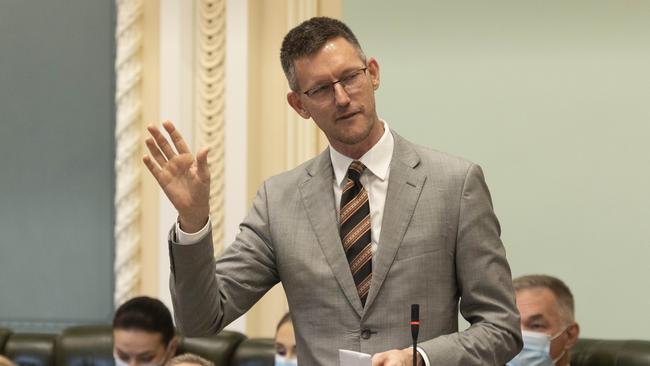
Transport Minister Mark Bailey defended the blow out, citing the rising construction and material costs in the wake of Covid and said the contract’s signing was a “major landmark”.
“There has been a significant amount of early works already undertaken by John Holland and we will now see construction works increase significantly on site,” he said.
“At this rate, we are on track for operations between Broadbeach and Burleigh Heads to commence by mid-2025.”
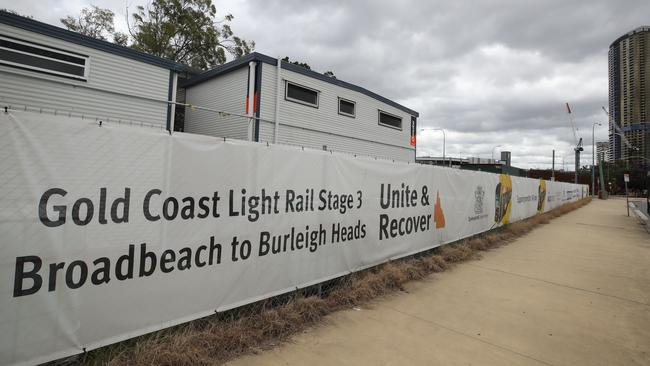
In regards to criticism about the best practice procurement policy, Mr Bailey said: “We wanted to make sure the workforce was properly looked after in terms of wage and conditions. No point doing a contract that seeks to do everything on the cheap. You end up with a low-quality project – we are making sure we attract the best workers with the high skills and making sure it’s a safe project.
“We need to attract secure workers – and are competing with other states and big projects. This will make sure it’s an attractive project for them and that’s why we have some of the best practice industry conditions.”
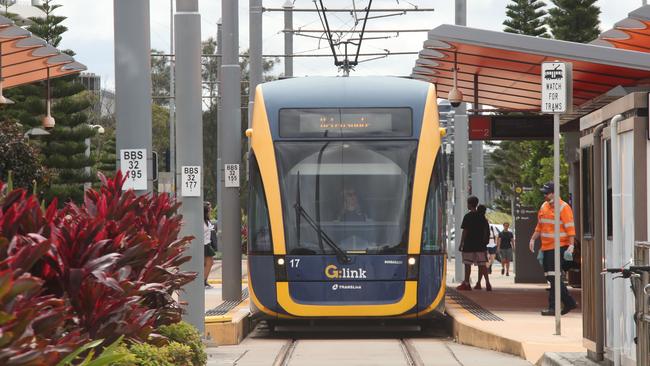
Queensland Premier Annastacia Palaszczuk said the project would support more than 760 jobs.
“John Holland have already been doing early works, and are now ready to hit the ground running,” she said.
“We know Gold Coasters love light rail, with the G (G-Link) recently clocking a milestone 60 million trips since it opened.”
In October 2020, the government announced that John Holland had beaten two fellow finalists to build the project.

In April 2021, the Bulletin revealed the contract had still not been signed, delaying work and causing a significant cost blowout.
Four weeks later the federal government swooped in with a $126m lifeline to get the project back on track.
The state government coughed up an extra $554m, $204m more than its original contribution in 2019.
Council’s commitment of $91.5m did not change.
Federal Cities Minister Paul Fletcher welcomed the deal but admitted he was unhappy with the delays.
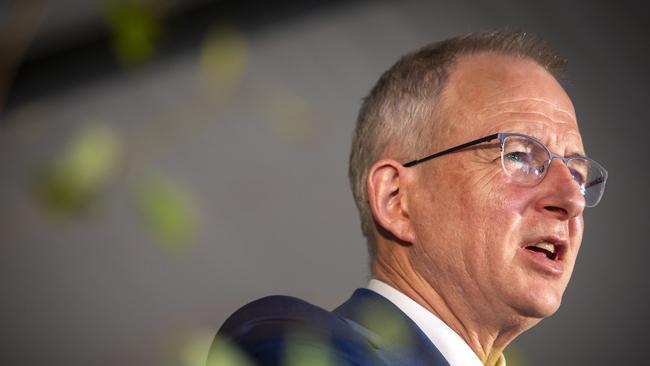
“Given John Holland were announced as the preferred contractor in 2020, it is disappointing that it’s taken this long for the state to finalise the contract and inevitably delaying the commencement of major works,” he said.
Early works began in mid-2021.
The new light rail link will feature eight stations along the Gold Coast Highway.
GoldlinQ chairman John Witheriff said local contractors and workers had already been engaged on Stage 3 during early works and this would continue with John Holland committing to high levels of local participation.
“We want this to be another local project built by local workers to ensure Stage 3 benefits the city during construction and once it is operational,” he said.
John Holland CEO Joe Barr said the start of construction would “revitalise” the city.
“We are excited to be involved on this city-shaping light rail project to improve public transport on the Gold Coast,” he said.
Mayor Tom Tate said he was delighted by the deal being signed but was “hot to trot” to get a contract drawn up for Stage 4, which would run from Burleigh Heads to the border.
“While we have everyone together signing contracts and the legal brains are hot to trot, we shouldn’t put their pens away,” he said.
“Instead, let’s draft up the plans for the big parts of Stage 4 – the koala crossing and the two bridges over Tallebudgera and Currumbin creeks.”




